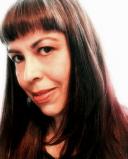Traumatic Brain Injury
Salvation: Finding Treatments to Restore Injured Neurons
Seeking and finding treatment for my brain injury began with googling ADD.
Posted June 22, 2018
Today, I begin a weekly serialization of chapters from Salvation, a section of my book describing the hope that effective treatment brings. For the first time in over five and a half years and after standard rehab had made little change to my injury, I received a "yes" to my goal of healing my brain. I began to experience permanent restoration of parts of my injured brain. Concussion Is Brain Injury: Treating the Neurons and Me begins at the start of my brain injury journey; the Salvation section begins the journey of restoring my neurons.
Salvation
Chapter 8: Brainwave

I launched Firefox and stared at the Google search box. Maybe instead of typing “brain injury treatment,” I should search for ADD, a condition I’d studied and researched back in university. I didn’t have ADD back then, but it sure felt like I had it now. Maybe I had googled ADD treatments before. I couldn’t remember. I would try again. I found my answer! The ADD Centre.
But it was too far away.
I’d call anyway.
First thing the morning of Thursday, July 14, 2005, I phoned Lily to pray for courage. I hung up. Prepared to ask if they knew anyone in Toronto, I dialled the number from memory, fearful I’d gotten it wrong like I usually do. To my utter shock, the medical doctor, the husband of the Clinic Director, answered, not voice mail. I learnt later that him answering was rare.
He told me that their primary clients were those with ADD and they had not treated many with closed head injuries. But they could assess me in Mississauga and treat me in Toronto. I could do that. He was very interested in seeing what they could do for me. It took all my effort to focus on his neuroscience talk. He told me they had a cancellation; I could be assessed in only three weeks. God heard me! Would this be my salvation? Maybe I could problem solve again. Read again. God had finally made an opening for me to get help. About damn time too.
Tick. Tick. Tick.
A yellow Lab wandered past me in the coolness of the ADD Centre on Thursday, August 4, 2005, and I smiled inwardly, amazed I had found my way despite being confused over the streets.
“Hello!” a high, chirpy voice greeted me. “I’m Dr. Lynda Thompson,” said a slim woman with shiny black hair in a classic bob.
This was the clinic’s Executive Director, I remembered. I stood up, spoke my name, and followed her into her office. My senses reeled. So much to see from her large dark wood desk to prints to carpets to books to prints to the windows to papers to her to books.
Two wooden chairs with country-style pillows on them waited for me. Choices, choices. I focused effortfully, finally choosing.
She was speaking.
This was my chance, my last chance to get help. I had searched for so long, and this was it. What if they found I was normal? The neuropsychological tests I’d taken had always shown me as normal. I shook my head internally. Focus on the now. In her neutral, quiet tones, she was asking me the same questions the IMEs and nice doctors had. When were you born? What happened in the crash? How long ago was it?
I handed over the sheaf of information I’d brought with me. I was well versed in seeing new practitioners who wanted to help me, and I knew to bring test results and reports.
She got up and walked around her desk to another one behind me. I struggled upright and followed her. An IBM computer!
Something familiar.
I’d started my work life using computers like this one. I hadn’t seen one in years! I sat down in another wooden chair in front of the computer as she instructed me. She said that I was to do a boring test. I nodded, trying to keep up. She handed me earphones, their small, foamy pieces rough against my ears. The computer would instruct me. She pointed the mouse out to me. I was to use it.
I felt comfortable with mouse and computer. I felt connected to a time when I was competent. I felt I understood the simple instructions: click the mouse if I hear or see the number one; do not click if I hear or see the number two.
As the program began, I became unsure of what I was supposed to do. But I had faith in computers. Computers were my friend. The male voice precisely spoke the instructions to me through the old earphones and led me through a practice. I felt I knew it.
Left alone to do the test, door shut, I stared at the screen. A number one flashed on in the old 1980s’ green pixels. I clicked the mouse. I heard intoned in my ear: one. I clicked the mouse. A two flashed. No, I told myself. Don’t click. Don’t click. I thought I heard one but wasn’t sure. And now there was a one on the screen. Click. It felt easy. Click. Don’t click. This isn’t hard.
The minutes ticked by.
They slowed into hours.
I had to talk to myself more and more to keep going. Boredom dragged my neurons. When would it stop? Wait, did I miss one? No, I didn’t think so. I was acing this. I was sure of it. Suddenly, it was over.
I sat back, exhausted. I slowly removed the earphones. Again, I was going to be told: nothing wrong here. Try harder. Be grateful. Get on with your life.
I wondered what I was supposed to do now.
- To be continued next week.
Copyright ©2017-2018 Shireen Anne Jeejeebhoy. May not be reprinted or reposted without permission.




